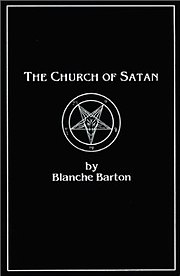
Satanism refers to a group of religious, ideological and/or philosophical beliefs based on Satan – particularly the worship or veneration of him. Satan is a figure of the devil in Christian belief, a fallen angel and leader of the devils who tempts humans into sin. For many centuries the term was used by various Christian groups as an accusation against ideological opponents. Actually self-identified Satanism is recent, and is thought to have begun with the founding of the Church of Satan by Anton LaVey in the United States in 1966 – that "church" being an atheistic group that does not believe in a literal Satan. Sharing "historical connections and family resemblances" with Satanism, and sometimes overlapping with it, are paganism, ceremonial magic, and "other dark entities such as Set, Lilith, Hecate, and Chaos", from the occult and the 'Left Hand Path milieu.'

The Temple of Set is an occult initiatory order founded in 1975. A new religious movement and form of Western esotericism, the Temple espouses a religion known as Setianism, whose practitioners are called Setians. This is sometimes identified as a form of Satanism, although this term is not often embraced by Setians and is contested by some academics.

The Church of Satan (CoS) is a religious organization dedicated to the religion of Satanism as defined by Anton Szandor LaVey. Founded in San Francisco in 1966, by LaVey, it is considered the "oldest satanic religion in continual existence", and more importantly the most influential, inspiring "numerous imitator and breakaway groups". According to the Church, Satanism has been "codified" as "a religion and philosophy" by LaVey and his church.

Anton Szandor LaVey was an American author, musician, and Satanist. He was the founder of the Church of Satan and the religion of Satanism. He authored several books, including The Satanic Bible, The Satanic Rituals, The Satanic Witch, The Devil's Notebook, and Satan Speaks! In addition, he released three albums, including The Satanic Mass, Satan Takes a Holiday, and Strange Music. He played a minor on-screen role and served as technical advisor for the 1975 film The Devil's Rain and served as host and narrator for Nick Bougas' 1989 mondo film Death Scenes.

A Black Mass is a ceremony celebrated by various Satanic groups. It has allegedly existed for centuries in different forms and is directly based on, and is intentionally a sacrilegious and blasphemous mockery of, a Catholic Mass.

The Satanic Bible is a collection of essays, observations, and rituals published by Anton LaVey in 1969. It is the central religious text of LaVeyan Satanism, and is considered the foundation of its philosophy and dogma. It has been described as the most important document to influence contemporary Satanism. Though The Satanic Bible is not considered to be sacred scripture in the way that the Christian Bible is to Christianity, LaVeyan Satanists regard it as an authoritative text as it is a contemporary text that has attained for them scriptural status. It extols the virtues of exploring one's own nature and instincts. Believers have been described as "atheistic Satanists" because they believe that God and Satan are not external entities, but rather projections of an individual's own personality—benevolent and stabilizing forces in their life. There have been thirty printings of The Satanic Bible, selling over a million copies.
LaVeyan Satanism is the name given to the form of Satanism promoted by American occultist and author Anton LaVey (1930-1997). LaVey founded the Church of Satan (CoS) in 1966 in San Francisco. Although LaVey is thought to have had more impact with his Satanic aesthetics of "colourful rituals" and "scandalous clothes" that created a "gigantic media circus", he also promoted his ideas in writings, such as The Satanic Bible. LaVeyan Satanism has been classified as a new religious movement and a form of Western esotericism by scholars of religion. LaVey's ideas have been said to weave "together an eclectic range of thinkers and tropes", combining "humanism, hedonism, aspects of pop psychology and the human potential movement", along with "a lot of showmanship", but also to be "contradictory". His ideas were heavily influenced by the ideas and writings of Friedrich Nietzsche, Ayn Rand and Arthur Desmond.

Diane Hegarty, was an American religious leader who, along with longtime partner Anton LaVey, co-founded the Church of Satan.
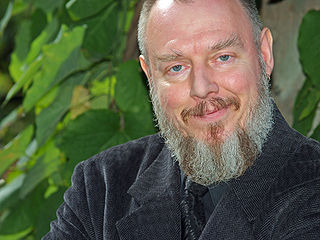
Peter Howard Gilmore is an American writer and LaVeyan Satanist. He is the current High Priest of the Church of Satan. As a representative of the Church of Satan, Gilmore has been interviewed on numerous television and radio programs dealing with the topic of Satanism, including appearances on History, the BBC, Syfy, Point of Inquiry, and Bob Larson's Christian radio show.

The Sigil of Baphomet is the official insignia of the Church of Satan, first appearing on the cover of The Satanic Mass album in 1968, and adorning the cover of The Satanic Bible the following year. The sigil has been called a "material pentagram" representational of carnality and earthy principles. The Church describes the symbol as the "...preeminent visual distillation of the iconoclastic philosophy of Satanism."
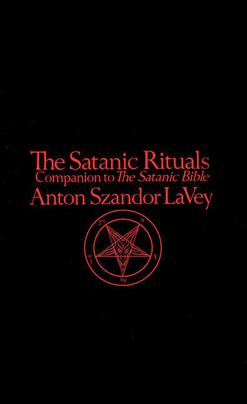
The Satanic Rituals is a book by Anton Szandor LaVey published in 1972 by Avon Books as a companion volume to The Satanic Bible. The book outlines nine rituals and ceremonies intended for group performance, with an introductory essay to each. Some of the rites presented are inspired by other groups, such as the Yezidis, Freemasons, Knights Templar and Order of the Illuminati, and some inspired by fictional works.

The First Satanic Church is an organization founded by Karla LaVey on October 31, 1999, in San Francisco, California. The church is dedicated to LaVeyan Satanism as codified by Anton LaVey in The Satanic Bible. The church's stated mission is to carry on the legacy of Anton LaVey through "the study of Satanism and the occult sciences". For over a decade the church operated The 600 Club, a now-defunct Internet forum dedicated to discussions of Satanism.

Theistic Satanism, otherwise referred to as religious Satanism, spiritual Satanism, or traditional Satanism, is an umbrella term for religious groups that consider Satan, the Devil, to objectively exist as a deity, supernatural entity, or spiritual being worthy of worship or reverence, whom individuals may contact and convene with, in contrast to the atheistic archetype, metaphor, or symbol found in LaVeyan Satanism. Organizations who uphold theistic Satanist beliefs most often have few adherents, are loosely affiliated or constitute themselves as independent groups and cabals, which have largely self-marginalized. Another prominent characteristic of theistic Satanism is the use of various types of magic. Most theistic Satanist groups exist in relatively new models and ideologies, many of which are independent of the Abrahamic religions.
Satanism is a belief or social phenomenon that features the veneration or admiration of Satan or a similar figure.
Greater and lesser magic, within LaVeyan Satanism, designate types of beliefs with the term greater magic applying to ritual practice meant as psychodramatic catharsis to focus one's emotions for a specific purpose and lesser magic applied to the practice of manipulation by means of applied psychology and glamour to bend an individual or situation to one's will.
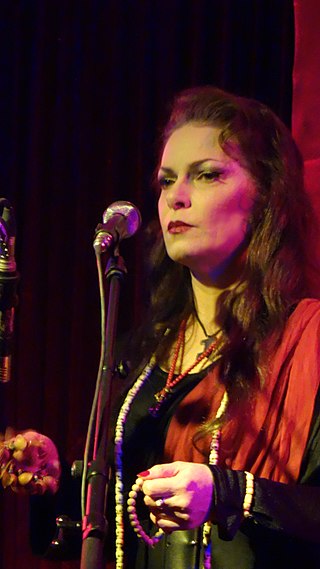
Zeena Galatea Schreck, known professionally by her mononymous artist name ZEENA, is a Berlin-based American visual and musical artist, author and the spiritual leader of the Sethian Liberation Movement (SLM), which she founded in 2002.
Within the Church of Satan, a Grotto is a clandestine association or gathering of Satanists within geographical proximity for means of social, ritual, and special interest activities. The Black House, the founding place and headquarters of the Church of Satan from 1966 to 1997, was effectively the first grotto, and was for a time referred to as the "Central Grotto". Grottos existed for a time in various parts of the United States; these included the Babylon Grotto in Detroit, the Stygian Grotto in Dayton, and the Lilith Grotto in New York. In 1975, LaVey disbanded all grottos, then reinstated them in the 1980s. The Church of Satan no longer formally recognizes or charters grottos.

The Satanic Temple (TST) is a non-theistic organization and new religious movement, founded in 2013 and headquartered in Salem, Massachusetts. Established to "fight a perceived intrusion of Christian values on American politics", congregations have also formed in Australia, Canada, Finland, Germany, and the United Kingdom. Co-founded by Lucien Greaves, the organization's spokesperson, and Malcolm Jarry, the group views Satan neither as a supernatural being, nor a symbol of evil; but instead relies on the literary Satan as a symbol representing "the eternal rebel" against arbitrary authority and social norms, or as a metaphor to promote pragmatic skepticism, rational reciprocity, personal autonomy, and curiosity.

Douglas Mesner, better known as Lucien Greaves, is a social activist and the spokesman and co-founder of The Satanic Temple.
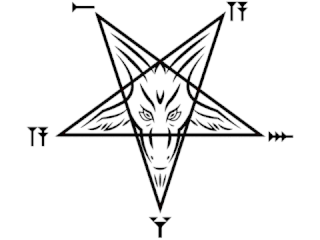
Joy of Satan Ministries, also referred to as Joy of Satan (JoS), is a website and western esoteric occult organization founded in 2002 by Andrea M. Dietrich (a.k.a. Maxine Dietrich). Joy of Satan Ministries advocates "Spiritual Satanism", an ideology that presents a synthesis of Theistic Satanism, Nazism, Gnosticism, Paganism, Western esotericism, UFO conspiracy theories and extraterrestrial beliefs similar to those popularized by Zecharia Sitchin and David Icke.
